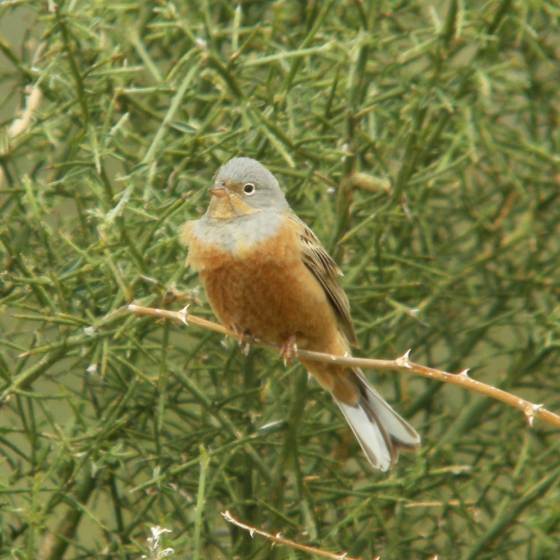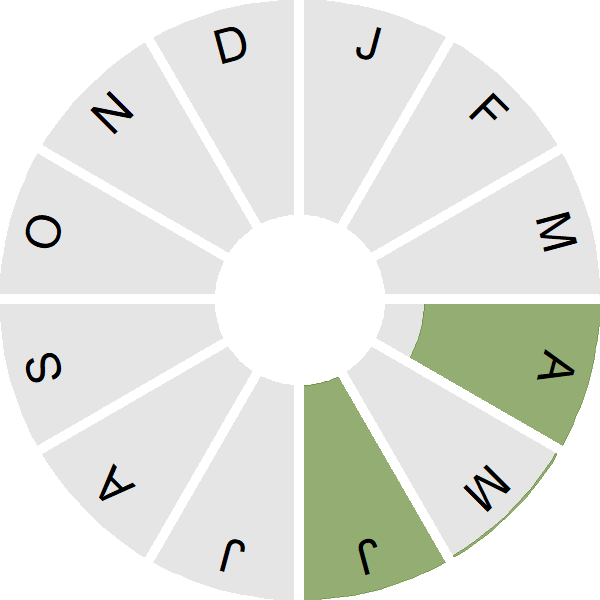Cretzschmar's Bunting

Introduction
Somewhat similar to a small Ortolan Bunting with a grey rather than green tone to the head, Cretzschmar's Bunting is an extremely rare visitor from south-east Europe.

Key Stats
Status and Trends
Conservation Status
Population Size
Population Change
Population trends of this scarce species are not routinely monitored.
Distribution
This vagrant is too rarely reported to map distribution.
European Distribution Map
Distribution Change
This vagrant is too rarely reported to map distribution change.
Seasonality
Cretzschmar's Bunting is a very rare vagrant; recent records have been in spring.
Weekly pattern of occurrence
The graph shows when the species is present in the UK, with taller bars indicating a higher likelihood of encountering the species in appropriate regions and habitats.

Movement
Britain & Ireland movement
Biology
Survival and Longevity
Survival is shown as the proportion of birds surviving from one year to the next and is derived from bird ringing data. It can also be used to estimate how long birds typically live.
Classification, names and codes
Classification and Codes
- Order: Passeriformes
- Family: Emberizidae
- Scientific name: Emberiza caesia
- Authority: Cretzschmar, 1828
- BTO 5-letter code: CREBU
- Euring code number: 18680
Alternate species names
- Catalan: hortolà cendrós
- Czech: strnad šedokrký
- Danish: Rustværling
- Dutch: Bruinkeelortolaan
- Estonian: nõlvatsiitsitaja
- Finnish: ruostekurkkusirkku
- French: Bruant cendrillard
- German: Grauortolan
- Hungarian: rozsdás sármány
- Icelandic: Hrjósturtittlingur
- Italian: Ortolano grigio
- Latvian: rudrikles sterste
- Lithuanian: rudagurkle starta
- Norwegian: Rustspurv
- Polish: trznadel modroglowy
- Portuguese: sombria-de-capuz
- Slovak: strnádka sivokrká
- Slovenian: balkanski strnad
- Spanish: Escribano ceniciento
- Swedish: rostsparv
- Welsh: Bras Cretzschmar

